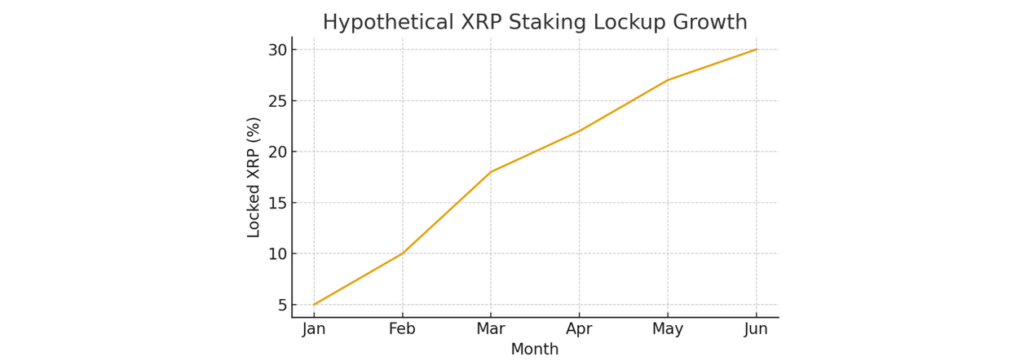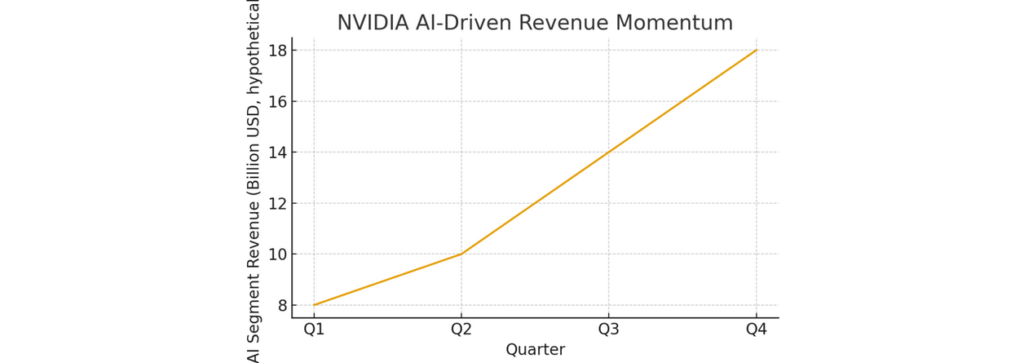
Main Points :
- XRP is preparing a shift toward a staking-enabled economic model, potentially transforming XRPL’s utility and stability.
- Bitcoin’s fall to $88,000 occurred despite strong U.S. equities and NVIDIA’s record earnings—highlighting deep macroeconomic fragility.
- NVIDIA’s explosive AI-driven performance briefly lifted both stocks and crypto but could not override ongoing liquidity and policy risks.
1. XRP Staking: A Turning Point Toward Utility, Stability, and Passive Yield
The proposal to introduce staking for XRP has sent a strong shockwave through the crypto community. Traditionally viewed as a high-throughput settlement asset optimized for cross-border payments, XRP is now exploring a transformation toward a more incentivized, yield-producing network model.
If implemented, staking would allow XRP holders to lock their tokens and participate in network validation or related protocol-level functions in exchange for rewards. Such a structure aligns XRP with the economic frameworks used by major networks such as Ethereum (PoS), Cosmos, and Solana—all of which rely on staking as a core mechanism for security and decentralization.
A. Why staking matters now
XRP Ledger (XRPL) has historically avoided staking to maintain minimal friction and high performance. However, competition in the settlement-layer and enterprise-blockchain landscape has increased, and many chains now incorporate a staking incentive layer to:
- increase community participation,
- secure the network against certain attack vectors,
- reduce circulating liquidity,
- and create a foundation for DeFi interoperability.
This new proposal reflects XRPL’s ambition to expand beyond payment corridors into DeFi, asset-tokenization, and programmable finance.
B. Market impact: locked supply and price stability
Staking would reduce the liquid supply of XRP by encouraging holders to lock tokens for yield. Reduced circulating supply tends to lower sell-pressure and can improve long-term price stability.
To illustrate the general relationship between token lock-ups and market volatility, insert the following figure:

For investors, staking represents more than a passive yield mechanism. It changes XRP from a pure transactional asset to a productive one, enabling:
- long-term yield generation,
- increased investor stickiness,
- stronger alignment between holders and the XRPL ecosystem.
Should this move be approved by the community and integrated into the protocol, XRP would join other major assets with economic incentive layers—strengthening both value and utility.
2. Why Bitcoin Collapsed to $88,000 Despite NVIDIA’s Record Earnings
The second major wave this week was the sharp and unexpected drop of Bitcoin (BTC) to $88,000, even as U.S. equities rallied on the back of NVIDIA’s exceptional earnings performance.
At first glance, the situation seems contradictory. NVIDIA’s strong results traditionally ignite risk-on appetite across global markets, and this time was no exception: the S&P 500 and Nasdaq surged immediately after the earnings call. Crypto briefly followed—but the rally quickly evaporated.
A. Macro liquidity pressures overwhelmed short-term optimism
The key reason for Bitcoin’s fall lies not within crypto markets specifically but in macro-level liquidity tightening.
Several underlying forces contributed:
- US dollar liquidity began contracting as Treasury operations and policy guidance signaled fewer liquidity injections.
- Rate-cut expectations weakened, increasing pressure on speculative assets.
- Institutional flows turned defensive, prioritizing cash and high-grade credit over high-volatility assets like BTC.
While NVIDIA created a temporary uplift, the structural macro forces ultimately dominated investor behavior.
B. Risk-on windows are shorter during liquidity stress
Institutional players increasingly treat short-term tech sector rallies as hedged trades, not trend reversals.
Bitcoin’s decline demonstrates that—even at high adoption levels—it remains deeply dependent on:
- the global dollar cycle,
- U.S. monetary policy expectations,
- and institutional risk appetite.
This dynamic is visible in the following illustrative chart:

The fall to $88,000 serves as a warning:
Crypto cannot rely on isolated bullish events to sustain momentum.
Sustained recovery requires an improving macro foundation—particularly U.S. liquidity and rate stability.
Investors seeking long-term positioning must watch policy signals more closely than short-term market catalysts.
3. NVIDIA’s AI Power: The Spark That Momentarily Revived Global Risk Assets
The third wave of the week came from NVIDIA’s earnings release, which once again exceeded even the highest expectations. NVIDIA’s AI-centric chips remain the backbone of global AI expansion—from cloud hyperscalers to LLM companies—and this momentum continues to drive U.S. equities to new highs.
A. AI demand is accelerating faster than supply expansion
NVIDIA reported double-digit quarter-over-quarter growth in its AI-server segment. Despite massive capital expenditures from cloud providers, demand still outpaces supply.
Here is an illustrative representation:

B. AI performance spills into crypto investor psychology
AI and crypto share a surprising correlation:
When AI-driven tech leads markets upward, investors often reallocate into other high-beta assets—including Bitcoin, Ethereum, and altcoins.
This time, the chain reaction was clear:
- NVIDIA earnings →
- Nasdaq futures spike →
- Risk appetite improves →
- BTC and ETH rebound for several hours.
However, this risk-on wave was short-lived as macroeconomic pressures resurfaced.
C. A temporary but powerful reminder of AI’s growing macro influence
NVIDIA’s impact demonstrates that:
AI is now a macroeconomic force influencing global capital flows—including crypto markets.
Even if temporarily overshadowed by liquidity tightening, AI remains one of the most important structural themes shaping investor portfolios.
Conclusion: The Three Waves and What They Signal for Crypto Investors
This week’s market movements highlight three pivotal forces that crypto investors must understand:
- Protocol evolution (XRP staking)
- Increases utility, reduces volatility, and creates yield opportunities.
- Demonstrates that major networks are adapting for long-term competitiveness.
- Macro dominance (BTC’s drop to $88,000)
- Structural risks continue to outweigh isolated bullish catalysts.
- Liquidity cycles and policy signals remain the single most important factor for crypto performance.
- AI as a global investment engine (NVIDIA’s spillover effects)
- AI earnings affect not only stocks but also crypto sentiment.
- Highlights new cross-market linkages important for multi-asset investors.
For readers searching for new assets, revenue sources, or practical blockchain use cases, the lesson is clear:
Sustainable opportunities arise where protocol-level innovation meets favorable macro environments and long-term technological megatrends.
XRP’s staking proposal fits this pattern.
AI-driven growth fits this pattern.
Bitcoin’s sensitivity to liquidity cycles warns against ignoring macro realities.
The next opportunities in crypto will emerge at the intersection of these three forces.

